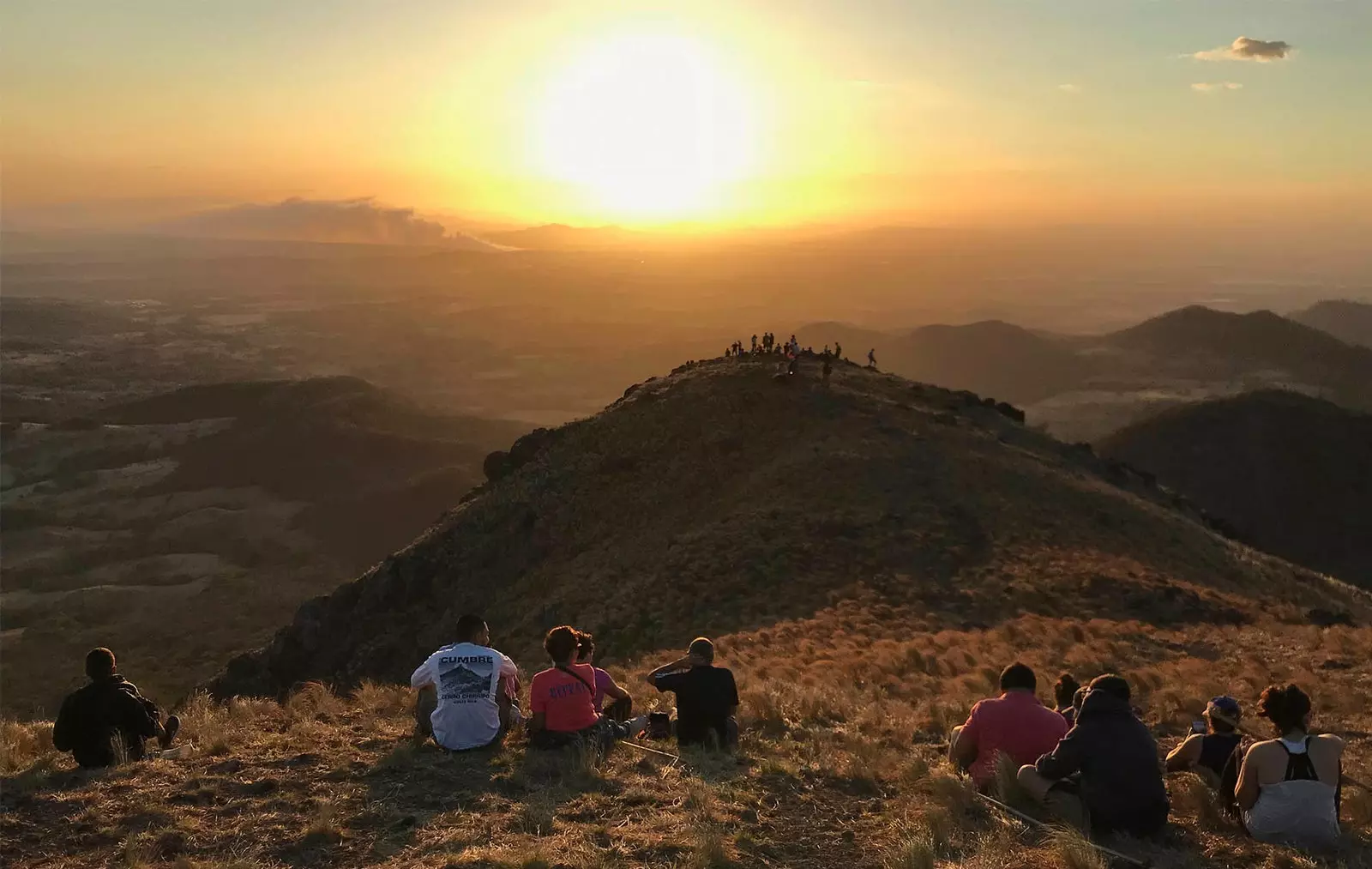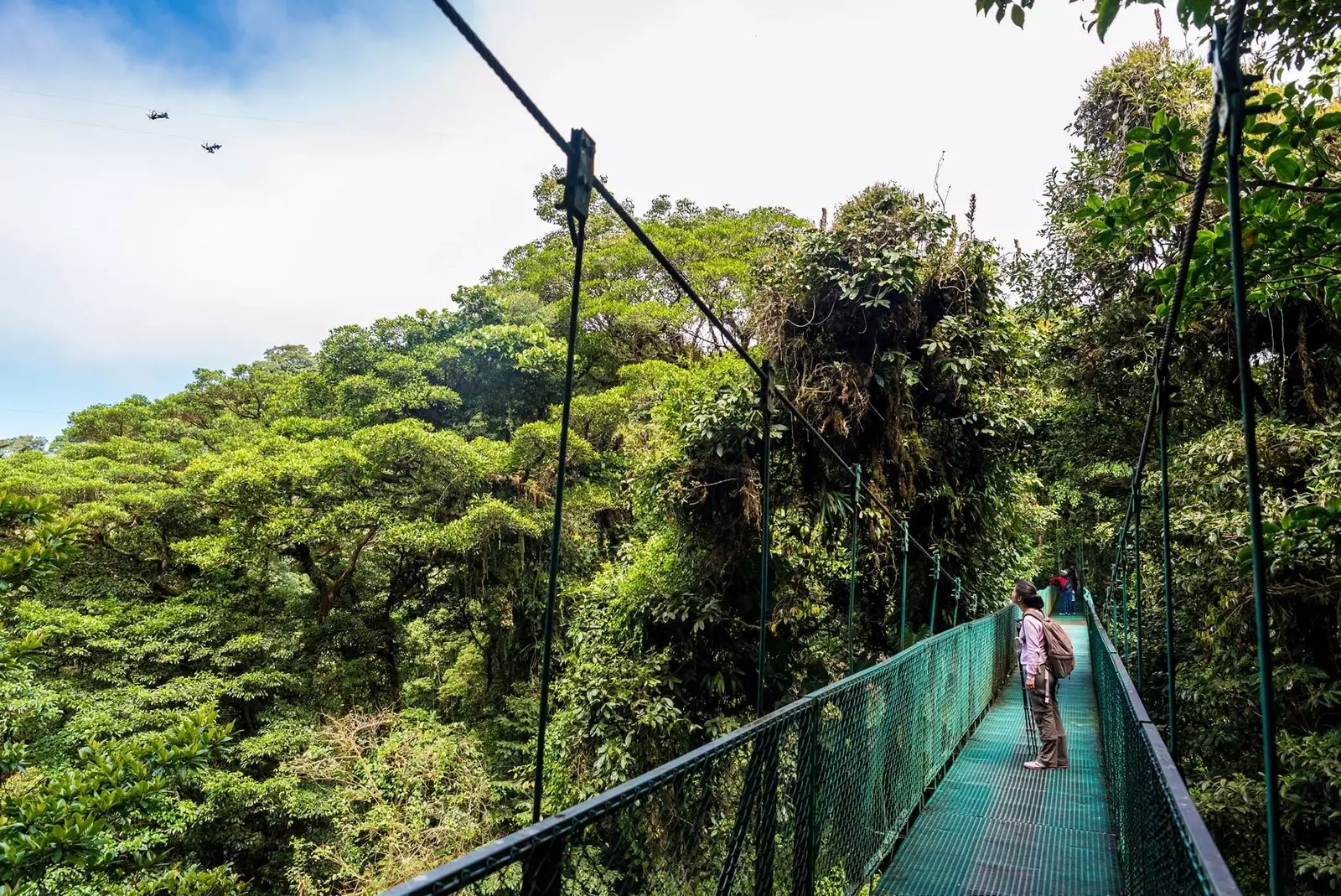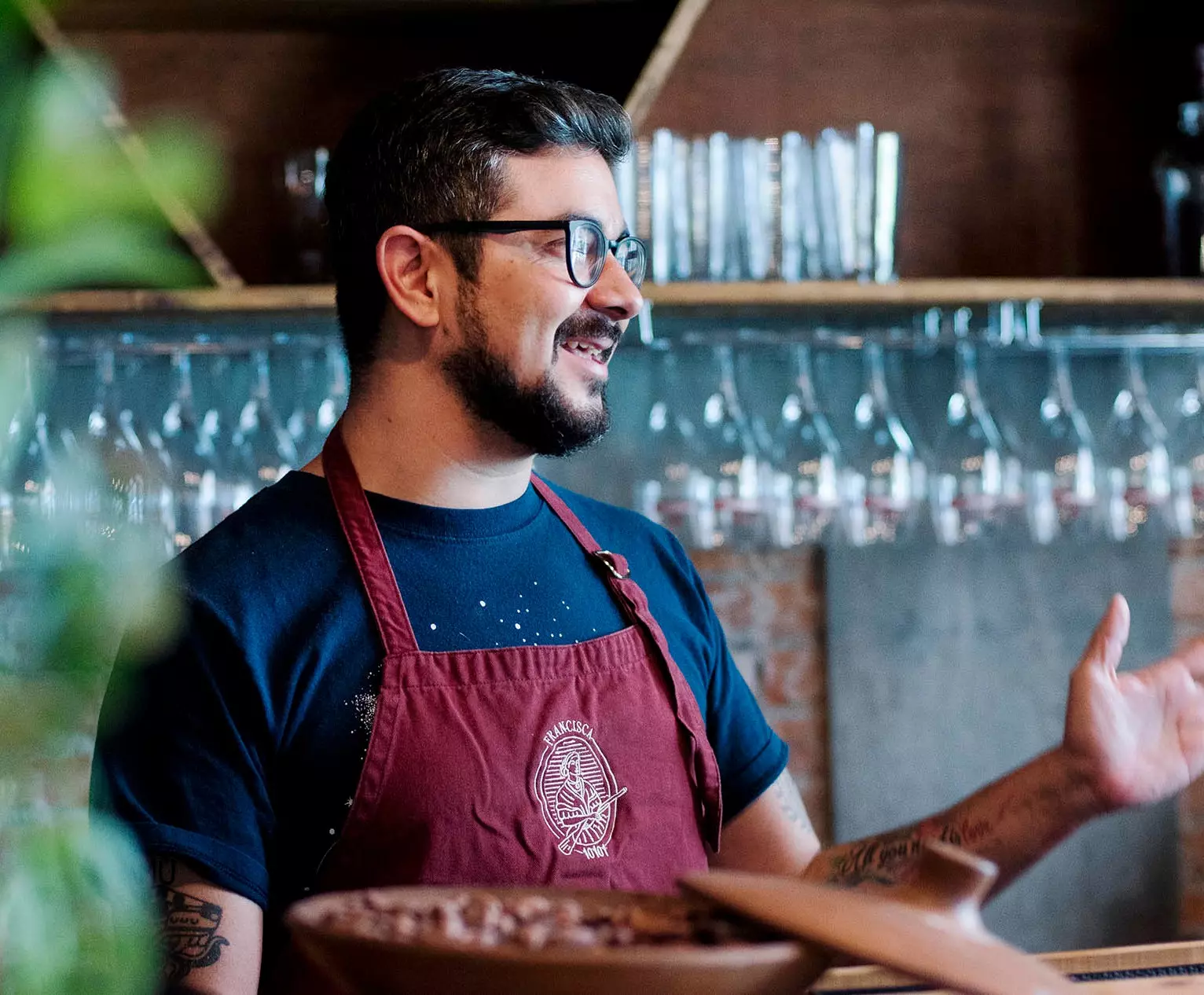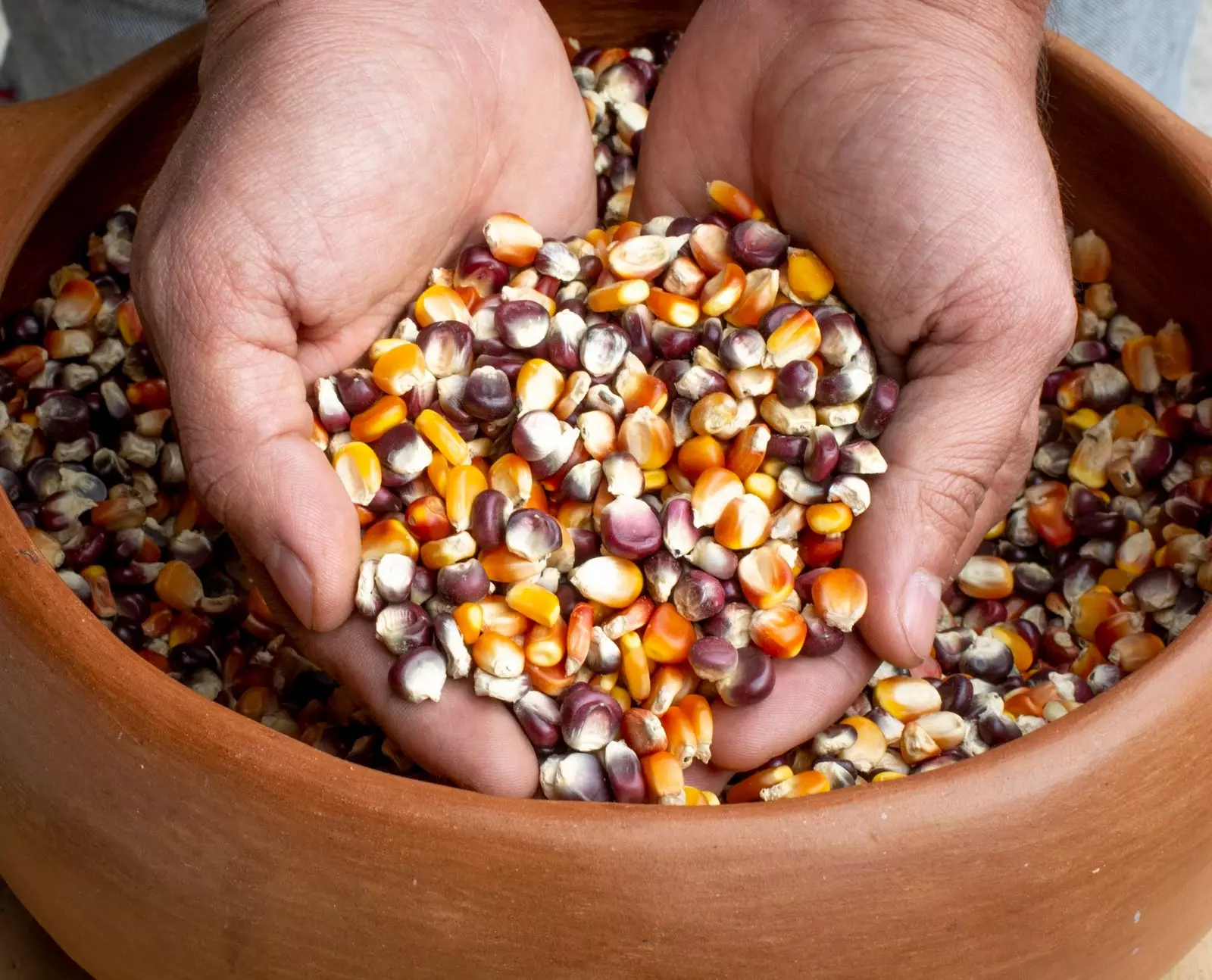
Costa Rica, sustainable par excellence
Blue and green wherever you look. The one with the clear skies and crystal clear waters, or the one with the virgin jungle that covers its territory. Sometimes, in the afternoon, the orange of the sun fading beyond the horizon. And among the trees, the rainbow of the many animals that inhabit these lands, a seal of respect for the sustainability of Costa Rica.
Respect for the environment is, in fact, a value that practically forms part of the Ticos' DNA, the main premise of all their activities. It is taught in school and cultivated throughout life, as the chefs' stories show. Pablo Bonilla and Randy Siles, who work so that the original identities of the country and local products continue to be present on their plates; of Mark Pitti, that takes us for a walk through San José, a city that he knows inch by inch; and of George Fruits , which has made hiking a whole philosophy of life.
IN LOVE WITH CHEPE: URBAN TOURS THROUGH SAN JOSÉ
Marcos Pitti woke up on a sofa and ended up creating Carpe Chepe. After a first experience as a host in the world of couchsourfing, in 2012 he set out to travel following this popular system that favors cultural exchange. His conclusion was that the experience of getting to know a city had more to do with the person showing it to you than with the place itself.
A few months later, he offered his first tour through Chepe, the affectionate nickname with which the Josefinos refer to the capital of Costa Rica. He acknowledges that It has not been easy to create demand for urban culture and entertainment in a country with such overwhelming nature and a large number of attractive beaches on both coasts..
Wanting to make known how much the city has to offer in a "different" way, he goes out every day to look for the best specialty coffee shops, to tell how San José grew up among coffee plantations, to discover the growing scene in the world of craft beer, to meet the chefs who are leading the renaissance of traditional gastronomy . In short, to spread his love for the city while he shares the talent and passion of local entrepreneurs.
San José is a small city that is easy to get around on foot, and Marcos' favorite neighborhood is climbing , for its vitality, a very active trade and restaurants and pubs for all tastes. "Plus, it's next to my second favorite neighborhood, The California , where the whole party is concentrated".
The Carpe Chepe project was born with a clear premise: sustainability. Since he was a child, Marcos has incorporated sustainable practices into his daily chores and it is easy for him to apply them at work. That's why, his tours are on foot, which allows him to have a minimal environmental footprint, closer contact with people and achieving a high social impact, a key point for Marcos.
"The current moment of involvement of young entrepreneurs who have opted for the rescue and promotion of historical and architectural heritage is very interesting. It is a huge opportunity for our city due to the generation of consumption in bars, restaurants, cafeterias and all productive chains premises that this implies. We believe that sustainable tourism can help improve Chepe".
At Carpe Chepe they are also working with schools, so that the new generations know and appreciate heritage and are interested in protecting it. In addition, they have recently launched a podcast on the history of the city to reach people in these days of confinement. Carpe Chepe has gourmet coffee tours, visits to the Central Market, historical, gastronomic and craft beer tours. As Mark says: "In San José there is everything, you just have to know who to ask".
COSTA RICA “A PATA”
They say that, in the old days, when the Ticos came home after a long day of work and walking for hours, they would say: "My love, if you could only see how bad my leg was today." The colloquial expression “ir a pata” is even more common in Costa Rica than in our country, so Jorge Frutos thought it very reasonable to call his company, specialized in walks around the country, Ticos a Pata.

Sunset in Cerro Pelado
In fact, if he has to choose a place in Costa Rica, he chooses, without hesitation, the mountains: "Every time I go up to see the sunrise from the top of the Cerro Chirripo , the highest point in our country, with 3,820 meters above sea level, I give thanks for the extraordinary nature that extends under my feet and I reaffirm my commitment to take care of it to leave a better legacy for future generations".
In addition to the ascent to Chirripó, among the most popular hikes are the Sukia route, crossing rivers, waterfalls and caves; or the one that reaches the El Santuario waterfall , inside a cave with rock formations that resemble church pedestals. One of the latest itineraries that it has incorporated is the Costa Rican Way , which links the two seas through 280 kilometers of trails. It can be done in modalities of between ten and sixteen days, depending on the fitness of the participants, and during the weekend there is also an option to go through one of the stages, the one that visits the Cabécar indigenous community, more aimed at people less accustomed to walking and local tourism.
Adventure sports and hiking are practiced along the Camino de Costa Rica, but indigenous communities are also visited. In short, it is an immersion in the culture of Costa Rica. " In our tours there is an important educational and awareness work . The participants learn about the flora and fauna of mountains and jungles, the characteristics of landscapes of waterfalls and volcanoes, but we also talk about traditions, legends; of our history," Jorge tells us.

A paradise for nature lovers
Thus, the rural world plays an important role in most itineraries, incorporating visits to artisan mills to see the processing of sugar cane to obtain a sweet cap ; to the area of Los Santos, where one of the best coffees in the world is produced, to learn about the particularities of planting, harvesting and preparing coffee; or entering a wood stove to get the point of such typical dishes as pot of meat, married or gallo pinto. In addition, when night falls, the guides liven up the evenings with the legends of the Cegua, the Cadejos, the Llorona or the Cart without Oxen.
In their commitment to sustainable practices, from Ticos to Pata they promote environmental social responsibility programs aimed at schools, universities and companies, in which they promote the cleaning of natural environments and the reforestation of forests. They also give the participants in the routes some bags to deposit the remains they generate and collect the ones they can find along the way. The motto of Ticos a Pata, Jorge tells us, is "Passion for happiness", which is the feeling that he shares with his clients when discovering together, and on foot, the wonders of Costa Rica.
FROM THE ROOTS TO THE PLATE: IN THE KITCHEN WITH PABLO BONILLA
Pablo Bonilla says that he does not have a restaurant, but a food education and information center that sells food . He remembers how those first influences received in the kitchen from his father, an excellent cook trained with the method of trial and error, led him to educate himself as a cook in Costa Rica and, later, traveling through Latin America.
His other great source of inspiration is the kitchen of the women of the indigenous communities , carriers of a valuable recipe book of oral tradition: all the spoon that their grandmothers bequeathed them. Pablo says that in Costa Rica there are very good places to eat, from haute cuisine restaurants to small sodas in rural towns, thanks to people in love with Tico gastronomy who are not going to allow culinary traditions to disappear.

Chef Pablo Bonilla
your restaurant Sikwa , which means 'non-indigenous person' in Bribrí, is the place where he brings to the table everything he believes in: the local and seasonal product for the freshness it provides, that this raw material is not produced in large volume and that participate in a fair economy. also in her he defends the ancestral techniques that he rescues from the Bribrí and the Cabécar, indigenous communities with whom he has a very close relationship. "The contact with these communities, personally, gives me an interest in my roots, a knowledge of the ancestral and its worldview. One learns to see life from another perspective, with enormous respect for nature and our environment" Paul comments.
The native ingredients bring respect to the culture and, as an indigenous friend of his says, integrating them into his preparations is an exercise in pure resistance by refusing to lose traditions to prepare a certain dish. So much so that there are customers who are surprised that the tortillas or the corn they use tastes so different from the one they buy in the supermarket.
"When we explain to them the process of sowing, harvesting and cooking technique that corn has had, the respect with which it was treated, then they understand the abysmal difference from what they are used to consuming ". Corn is precisely its essential ingredient, due to its incomparable flavor and nobility; in addition, it has a very valuable cultural background for Mesoamericans.

A corn like no other
Another of his projects is Francisca, Costa Rican cuisine of the 19th and early 20th centuries , where they investigate how and what was eaten at that time, what happened so that Costa Rica lost so much identity -not only gastronomic, but cultural- and what the migrations of Europeans, Afro-descendants and Asians contributed.
In all his projects he integrates sustainability practices , from the very moment of deciding who to buy the raw material from, and for this it has the advantage of the growing interest of the consumer in gastronomy. "There is a new traveler who is more and more foodie, he travels to have interesting gastronomic experiences, he has criteria and knowledge. That makes gastronomy great and keeps it sustainable, he is a more responsible consumer."
RANDY SILES, BETWEEN THE RING AND THE STOVE
When he was a kid, Randy Siles always accompanied his mother to pastry courses in which he was enrolled. He points to those sweet days watching her cook as the source of his vocation as a cook. Once immersed in his culinary education, Randy would get up at 4:30 in the morning to get into a ring; he became a boxer, attending some competitions, to finance his studies.
He took off his gloves to attend to his job at the Bank of Costa Rica and at night, he attended courses at the ARCAM Gourmet School. The compares the values of boxing with those of gastronomy: "It is a complete connection with myself, a sport full of intense moments, physical sacrifice, challenges and, above all, a lot of strategy, perseverance and discipline, sensations that I also perceive when I cook".
After finishing his studies, came a stage of research into French, Japanese and Galician cuisine, in order to apply zero kilometer practices to his preparations and focus on marine and vegetable products. He speaks of the local product as the past, the present and the future of his cuisine. "Without a doubt. It is a quality product, fresh, healthy, with a reduced carbon footprint and that allows the economic activation of local people. Food sovereignty must be the strength and competitive advantage of our communities".
He is ambassador of National Plan for Healthy and Sustainable Costa Rican Gastronomy , whose aims are the stimulation and promotion of contemporary cuisine based on native products, pedagogy in favor of healthy food consumption and the rescue of culinary traditions. He believes that Costa Rica is at a great moment for the assimilation of a plan of these characteristics, of which he highlights its main values: transversal, multidisciplinary and multicultural.
Randy's main project is autochthonous, a training space for new generations of chefs with a curriculum based on solid pillars: protect and respect natural resources, cultural identity and culinary heritage and promote research and improve the main social aspects of the local destination. Together with the Finca Integral Educativa San Francisco de Asís, in Copey de Dota, he has just forged the alliance root : the restaurant the hopper , located on the farm, is the laboratory and educational center of Autoktono.
